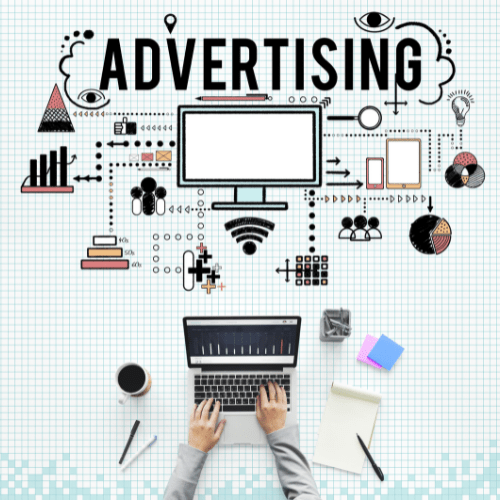
Programmatic advertising is a way to buy and sell digital advertising space using software and algorithms. This means that advertisers can buy ad space without having to negotiate directly with publishers. Instead, they can use platforms that automate the process.
How Programmatic Advertising Works
Programmatic advertising works by matching advertisers with publishers who have ad space available. The matching is done based on a variety of factors, such as the advertiser’s target audience, the publisher’s website or app content, and the price of the ad space.

Types of Programmatic Advertising
There are two main types of programmatic advertising: real-time bidding (RTB) and programmatic direct.
- RTB: In RTB, advertisers bid on ad space in real-time. This means that the auction happens every time an ad impression is available. The highest bidder wins the auction and their ad is displayed.
- Programmatic direct: In programmatic direct, advertisers and publishers negotiate directly to buy and sell ad space. This is often done for premium ad space, such as homepage banners on high-traffic websites.
Key Benefits of Programmatic Advertising
In general, the biggest advantages of using programmatic advertising include:
- Precision targeting. Programmatic advertising allows you to target your ads to very specific audiences. You can target people by their demographics, interests, or even their past browsing behavior. This means that your ads are more likely to be seen by people who are actually interested in what you have to offer.
- Increased efficiency. Programmatic advertising is more efficient than traditional advertising methods. You can buy ad space in real-time, and you only pay for the ads that are actually seen. This can save you a lot of money.
- Data-driven insights. Programmatic advertising can provide you with valuable data about your target audience. This data can help you to improve your marketing campaigns and get better results.
- Winning programmatic design. The use of strong programmatic design will draw attention to your ads, which is a big win for your organization. It’s important to use programmatic design to offer something of genuine value to your prospects to help you gain more clicks and conversions.

Pitfalls to Avoid in Programmatic Advertising
Programmatic advertising can be a gold mine when properly implemented. But, like any venture, it has pitfalls to avoid.
Here are 12 common missteps you should strive to avoid:
- Poor targeting. Defining your target audience too narrowly or widely can lead to wasted ad spending. Precision is key.
- Not enough time in the market. Patience is a virtue in programmatic advertising. Give your campaigns ample time to optimize results.
- Lack of campaign alignment. It’s essential to align all prospect touchpoints along the same campaign story. Use cohesive messaging and design for maximum impact.
- Poor creative execution. Even with all the data and precision targeting, poor ad creative may tank your campaign. Invest in high-quality creative.
- Ignoring user experience. Bad UX, such as invasive or cheap borrowed interest ads, can harm your brand reputation. Respect your audience’s experience.
- Neglecting mobile. Mobile internet usage is on the rise. Ensure your ads are optimized for mobile viewing.
- Underestimating data privacy. Compliance with data privacy laws is not optional. Make sure your campaigns comply with GDPR and other relevant regulations.
- Lack of testing. A/B testing should be used regularly as it can help improve your campaign performance.
- Mediocre click payoff. If your target clicks an ad, all the work and expense will be wasted if there’s a low-interest landing page, marketing asset or offer. Make sure the click payoff is fabulous.
- Failing to use AI/ML. AI and Machine Learning can provide deep insights and enhance your ad targeting.
- Lack of diversification. Don’t put all your eggs in one basket. Diversify your programmatic ad channels for better reach.
- No sales enablement. Your SDRs and sellers should echo the story told in your programmatic campaign. Ensure your lead catchers are enabled before they follow up with prospects and customers.
Conclusion
Overall, programmatic advertising is a powerful tool that can be used to reach target audiences more effectively and efficiently. By steering clear of those common pitfalls, understanding the metrics and benchmarks of success, and leveraging the powerful tools at your disposal, you’ll be well on your way to harnessing the full potential of your programmatic campaigns. Happy advertising!
If your organization is struggling to harness the power of programmatic advertising, CyberTheory stands ready to help. CyberTheory’s programmatic advertising services are designed to resonate with the needs of modern B2B organizations. Our programmatic advertising strategies are crafted with precision, guided by data, and driven by a relentless pursuit of excellence. Let’s connect and discover what CyberTheory can do for your organization today.
Julie Jordan